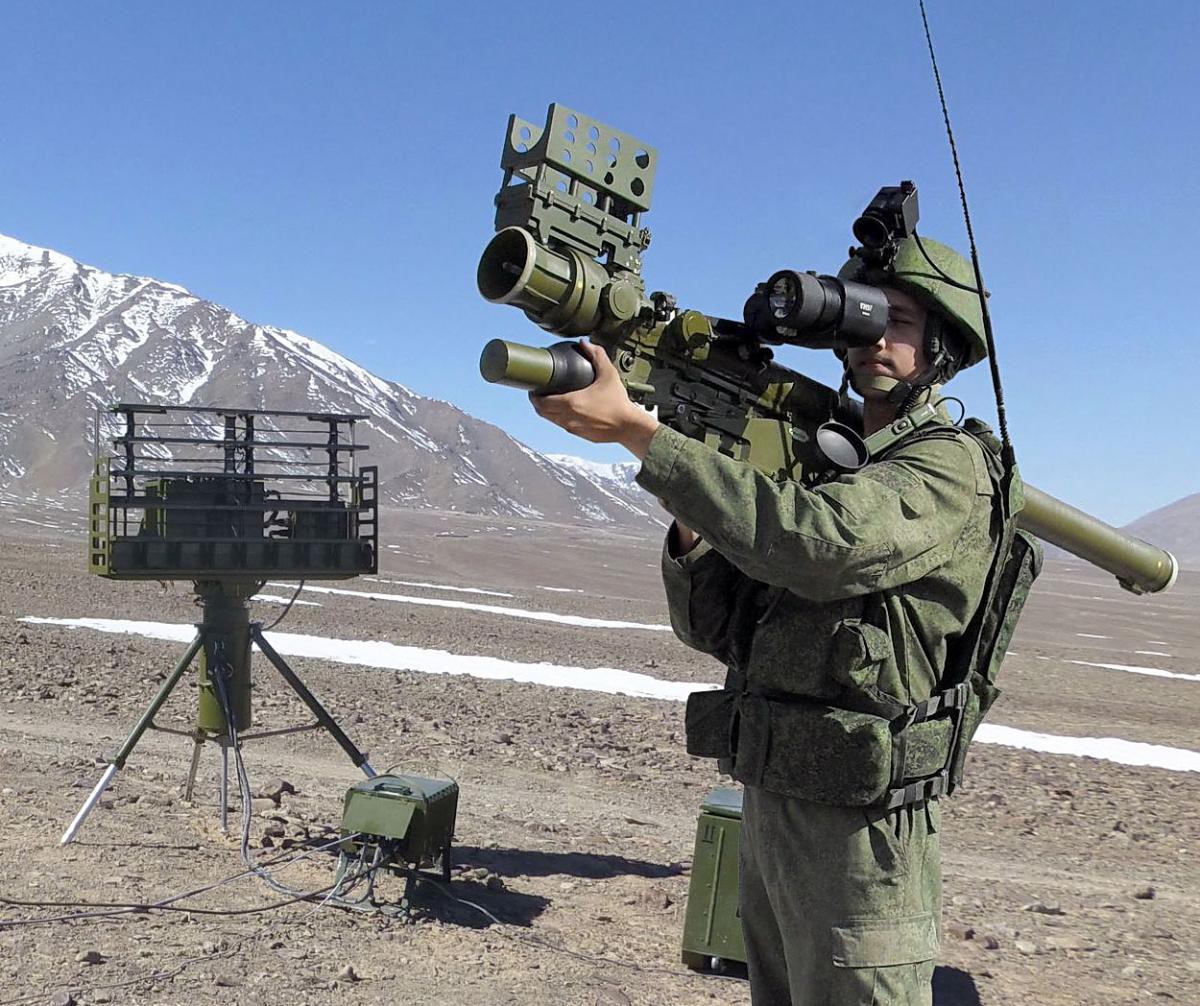
Igla-S

16.11.2023
Igla-S , Daily Current Affairs , RACE IAS : Best IAS Coaching in Lucknow
|
For Prelims: About Igla-S, Important points, Features of Igla-S, |
Why in the news?
Recently Russia has signed a contract to supply Igla-S hand-held anti-aircraft missiles to India and to allow production of Igla there under license.
Important points:
- No information has been given about which Indian companies will be involved or when its possible production will start.
- India is the world's largest arms importer.
- Russia remains its largest supplier, despite losses to its military and weapons from the war in Ukraine.
- According to the Stockholm International Peace Research Institute (SIPRI), Russia accounted for 45% of India's arms imports between 2018 and 2022, with France contributing 29% and the United States 11%.
About Igla-S:
- The Igla-S is a man-portable air defense system (MANPADS) developed by Russia that can be fired by a man or crew to bring down enemy aircraft.
- It is known in the West as the SA-24 Grinch.
- It entered service with the Russian Army in 2004.
- It can be fired by an individual or crew to bring down an enemy aircraft.
- It has the capability to shoot down planes flying at low altitude.
- It can also identify and neutralize aerial targets such as cruise missiles and drones.
Features of Igla-S:
- The Igla-S system consists of combat equipment, including 9M342 missiles and 9P522 launching mechanisms, as well as maintenance equipment, including 9V866-2 mobile test stations and 9F719-2 test sets.
- Its effective range is up to 6 km.
- The limited height of effective target destruction for the "Igla-S" complex is 3.5 km.
- It has a heavier, more powerful warhead to maximize damage capabilities, as well as contact and timed fuses for increased attack range.
- This bomb is high-explosive fragmentation (HE-FRAG) and weighs 2.5 kg.
- It is a hand-held defense system. It can also identify and destroy cruise missiles and drones.
Helicobacter pylori (H. pylori)
|
For Prelims:About Helicobacter Pylori,Important points,Helicobacter pylori infection,symptoms, Background of H. pylori |
Why in the news?
Recently the National Institute of Cholera and Enteric Diseases has made possible the rapid detection of drug-resistant 'Helicobacter pylori'.
Important points:
- Helicobacter pylori (H. pylori) A two-step PCR-based assay of a small area of bacteria can help detect H. pylori infection.
- It can also identify clarithromycin-resistant bacteria and drug-sensitive bacteria in six-seven hours.
- It has been developed by a team of researchers from the National Institute of Cholera and Enteric Disease (ICMR-NICED), Kolkata.
About Helicobacter Pylori:
- This is a common type of bacteria that grows in the digestive tract and attacks the lining of the stomach.
- H. pylori is commonly associated with chronic active gastroenteritis, and the bacteria reside in glands beneath the mucosal surface.
- Its infections are usually harmless, but it has been linked to gastrointestinal issues such as peptic ulcers and stomach cancer.
- Several extragastric complications, such as iron deficiency anemia, immune thrombocytopenic purpura, vitamin B12 deficiency, diabetes mellitus, cardiovascular disease, and certain neurological disorders, have also been associated with H. pylori infection.
- It is present in the body of about two-thirds of the world's population.
- In India, H. pylori infection affects 60–70% of the population.
- This usually occurs during childhood.
- The spiral shape of H. pylori allows it to penetrate the lining of the stomach, where it is protected by mucus and cannot be reached by the body's immune cells.
Helicobacter pylori infection:
- There is no clear information about how this bacteria is spread, but person-to-person transfer through oral or fecal contact is thought to be the predominant method.
symptoms:
- Most people with H. pylori infection never have any signs or symptoms.
- When signs or symptoms of H. pylori infection appear, they are usually related to gastritis or peptic ulcers and may include:
- Stomach pain or burning.
- Stomach pain (extreme when your stomach is empty).
- nausea.
- loss of appetite.
- Frequent belching.
- Swelling.
- Unintentional weight loss.
Treatment:
- Clarithromycin is an antibiotic commonly used to treat H. pylori infections, but drug-resistant strains in India have raised concerns about its effectiveness.
- Clarithromycin usually involves a combination of antibiotics and a proton-pump inhibitor (a medicine that reduces the acid in your stomach) for up to 14 days.
- If not treated effectively with antibiotics, it remains in the stomach for life.
- This treatment is sometimes called triple therapy.
Background of H. pylori:
- It is estimated that H. pylori was found in an infected person in Africa about 60,000 years ago.
- H. pylori was found in contemporary animals before people migrated out of Africa and eventually in humans.
- In early 1982, Doctors Barry Marshall and Robin Warren of Perth, Western Australia, discovered H. pylori in patients suffering from inflammation and ulcers in the gastric mucosa.
- A widespread belief at the time was that microbes could not survive in the acidic environment of the stomach.
- As a result of Marshall and Warren's discovery, they were awarded the Nobel Prize in Physiology or Medicine in 2005. Marshall and Warren's study was the first to find spiral-shaped bacteria in the stomach wall.
However, German researchers were not able to develop them, so their findings were ignored.